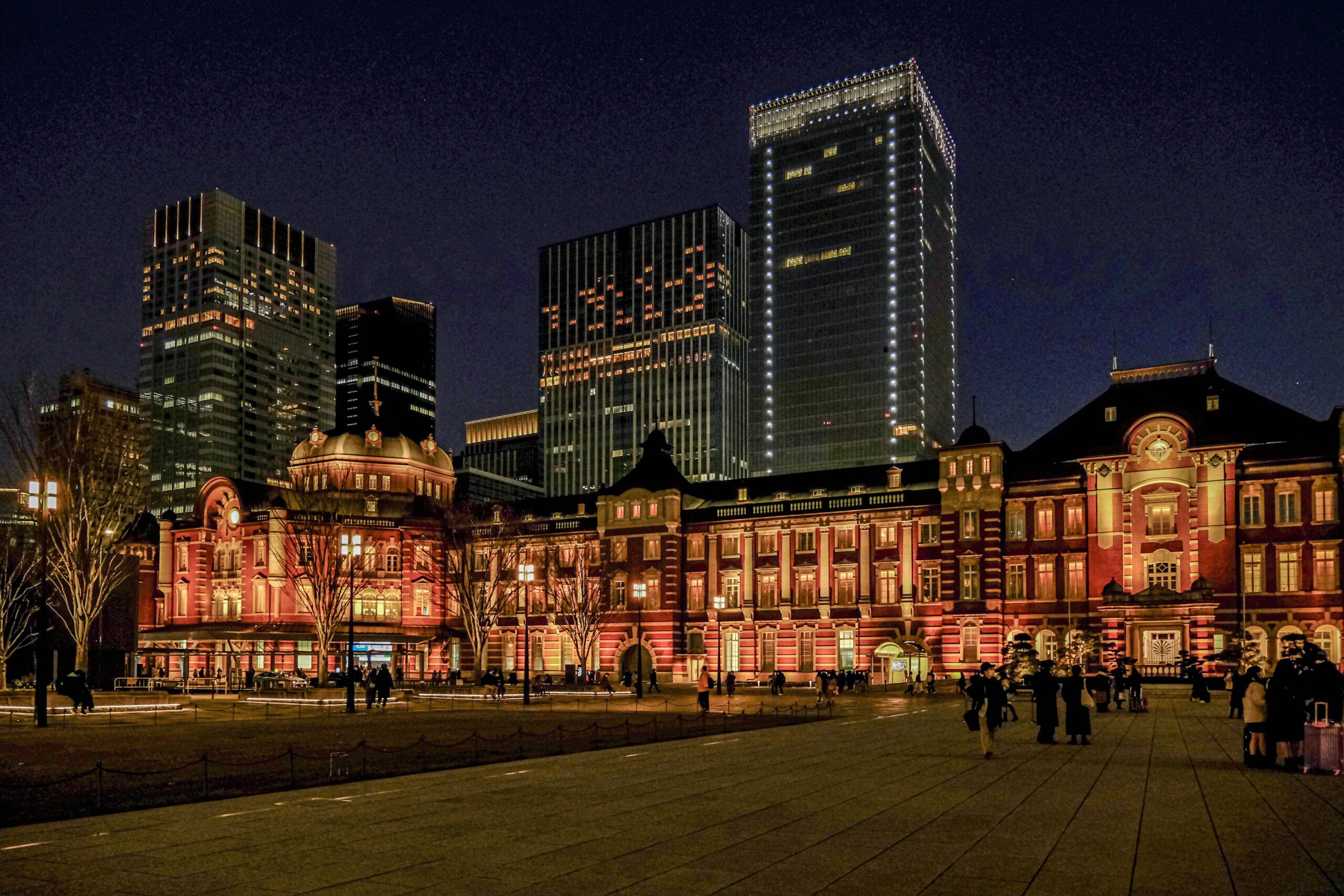Leaving work early on a Friday afternoon was a surprise even to myself. It had been three months since I started my new job in Tokyo. Life moved at a pace I hadn’t experienced back in London. This wasn’t a corporate relocation—I had chosen to make the move myself. Part of the appeal was the chance to work on international projects, but deeper down, I think I was hoping to rediscover something about myself.
Still, my weekends had become predictable: reading at a neighborhood café or aimlessly scrolling through Netflix. Tokyo felt overwhelming, and I had no idea where to go to find a sense of belonging.
One day, I came across an article that said, “Tokyo Station is both the beginning of a journey and a destination in itself.” That line stayed with me. I had no plans for the weekend, and the weather was good. It was enough of a reason. I decided to spend a night in Marunouchi, the area next to Tokyo Station.
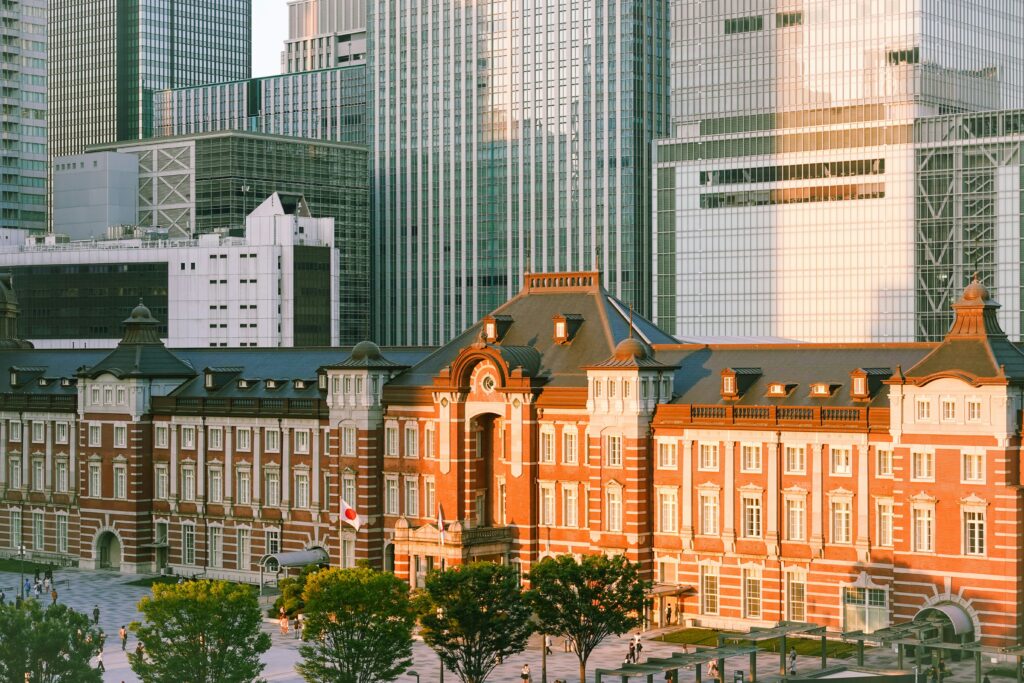
I checked into my hotel at dusk. From the window, I could see fresh green leaves shimmering at the tips of the tree-lined avenue, catching the soft glow of the setting sun. Though it’s a business district, Marunouchi felt like a place where time flowed differently. My first destination was, of course, Tokyo Station’s Marunouchi Building.
Completed in 1914, the red-brick structure has survived earthquakes and wartime bombing, later restored with remarkable fidelity. Its iconic domes and Renaissance-inspired architecture have made it a national cultural landmark. What caught me off guard was a wedding photoshoot happening right in front of it.
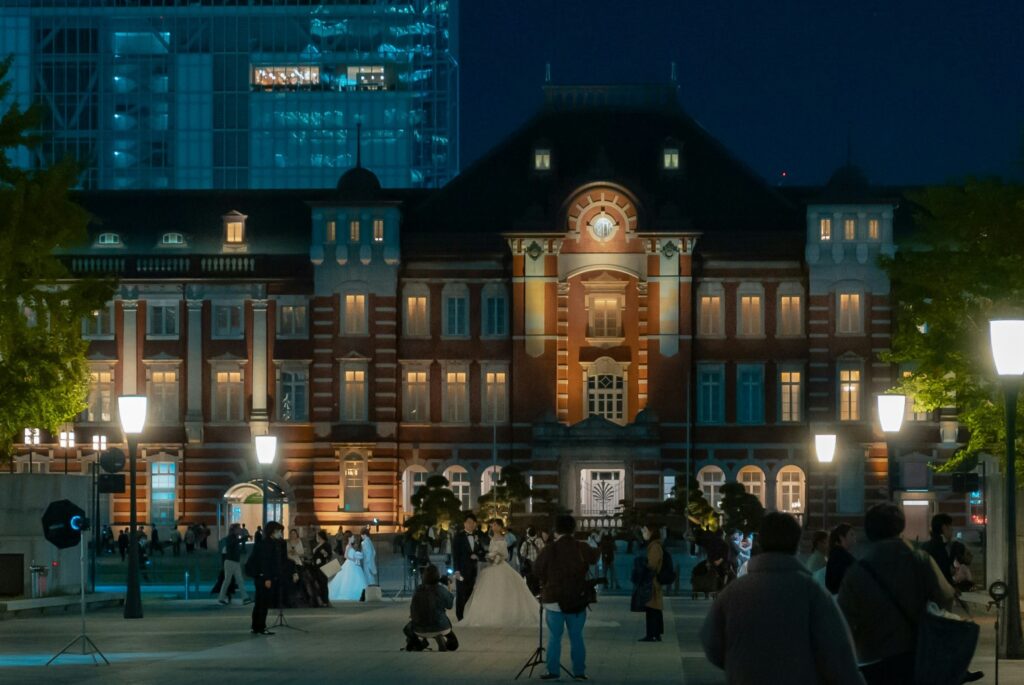
It turns out that Tokyo Station is not just a transport hub but also a beloved wedding photography spot. A bride in a white dress stood beside her groom in a tuxedo, surrounded by a flurry of assistants—one holding the train of the dress, another adjusting the veil to catch the breeze. As the photographer quietly clicked the shutter, the illuminated station rose behind them like a gentle stage. For a fleeting moment, the everyday world looked like a scene from a film—timeless, quiet, and full of light.
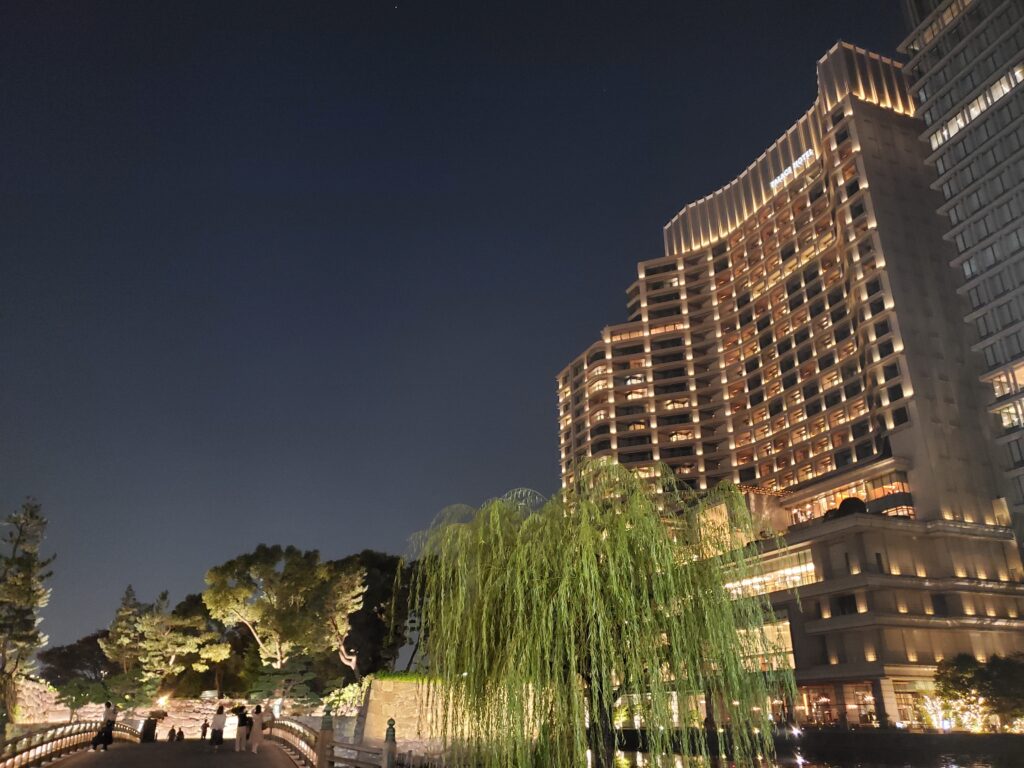
A short walk from there led me to Wadakura Fountain Park, tucked beside the outer gardens of the Imperial Palace. At night, the fountains shimmer in the glow of soft lights, and the reflections of nearby skyscrapers ripple across the surface of the water. It felt as though the city itself was breathing. As I sat on a bench, watching the scene unfold, a man sitting nearby turned to me.
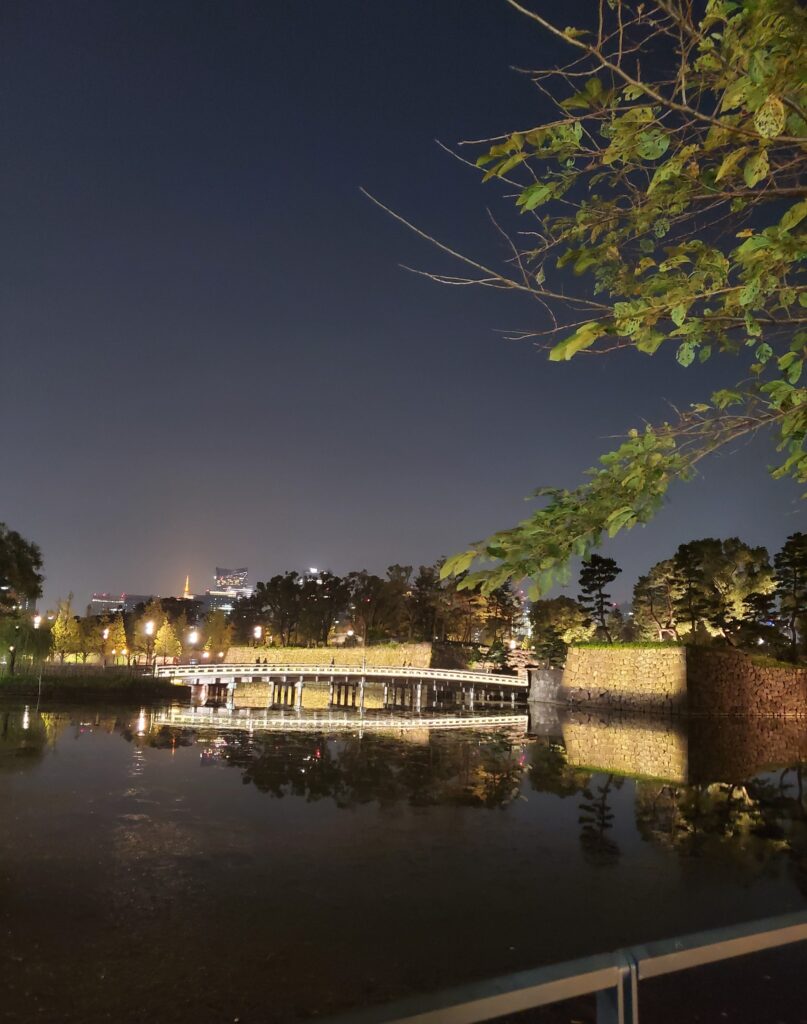
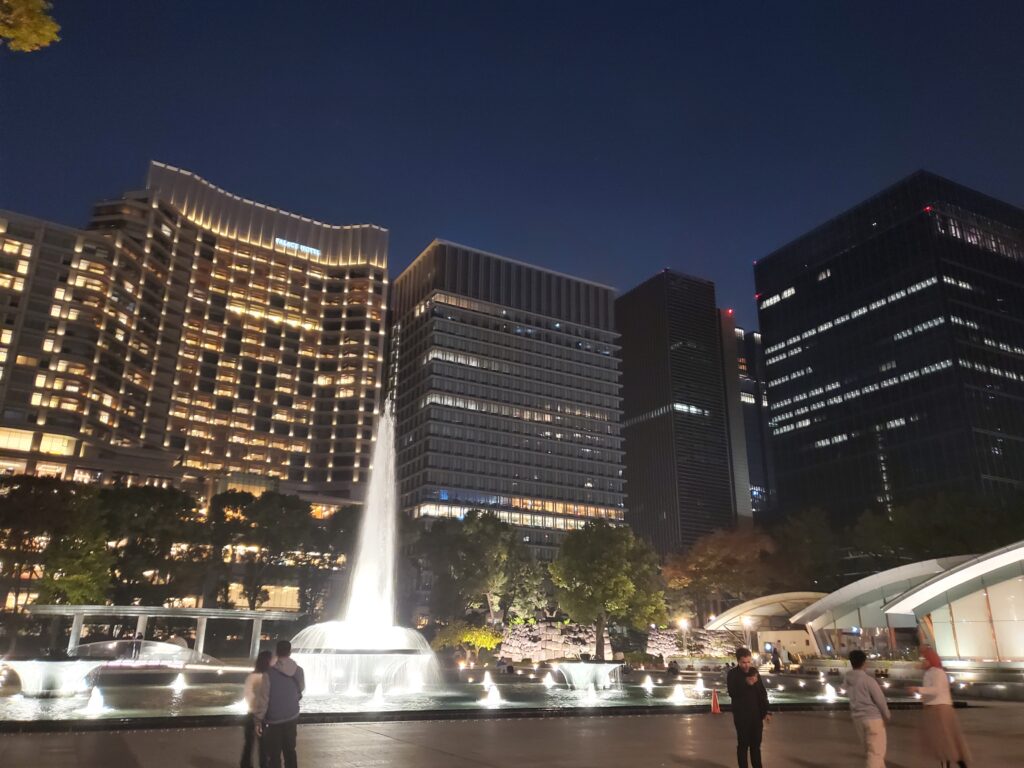
“This time of day is special,” he said. “It’s so quiet.”
His name was Ryuji Takada, around my age, working in advertising. He wore a beige coat and black-rimmed glasses, his words calm but carefully chosen—almost poetic.
“Tokyo’s loud,” he continued, “but it still knows how to be quiet. There are moments in between—boundaries between work and rest, between routine and escape. Marunouchi is one of those in-between places.”
His words, paired with the soft hum of the fountains, sank into me like warm rain.
The next morning, spring sunlight poured gently into the streets. I headed to the East Gardens of the Imperial Palace, built on the site of the former Edo Castle. Moss-lined paths, stone walls, and wide lawns spoke of centuries past. Young green leaves rustled in the wind, creating soft waves of color. The silence here was unlike anything back home—a layered quiet, rich with memory.
In the afternoon, I visited the Mitsubishi Ichigokan Museum, a red-brick building designed in the style of 19th-century British architecture. Though the exhibition of Impressionist paintings was beautiful, it was the courtyard café that stayed with me. I ordered a modern twist on a traditional dorayaki—a soft pancake sandwich filled with matcha cream and sweet red bean paste—and a brown rice tea latte. The dessert was delicate yet rich, slightly bitter and sweet in the same bite. The latte, with its nutty aroma, brought the spirit of spring into my chest with every sip. A breeze stirred the terrace, and a few green leaves drifted down onto the table, where they melted into the wood like watercolor.
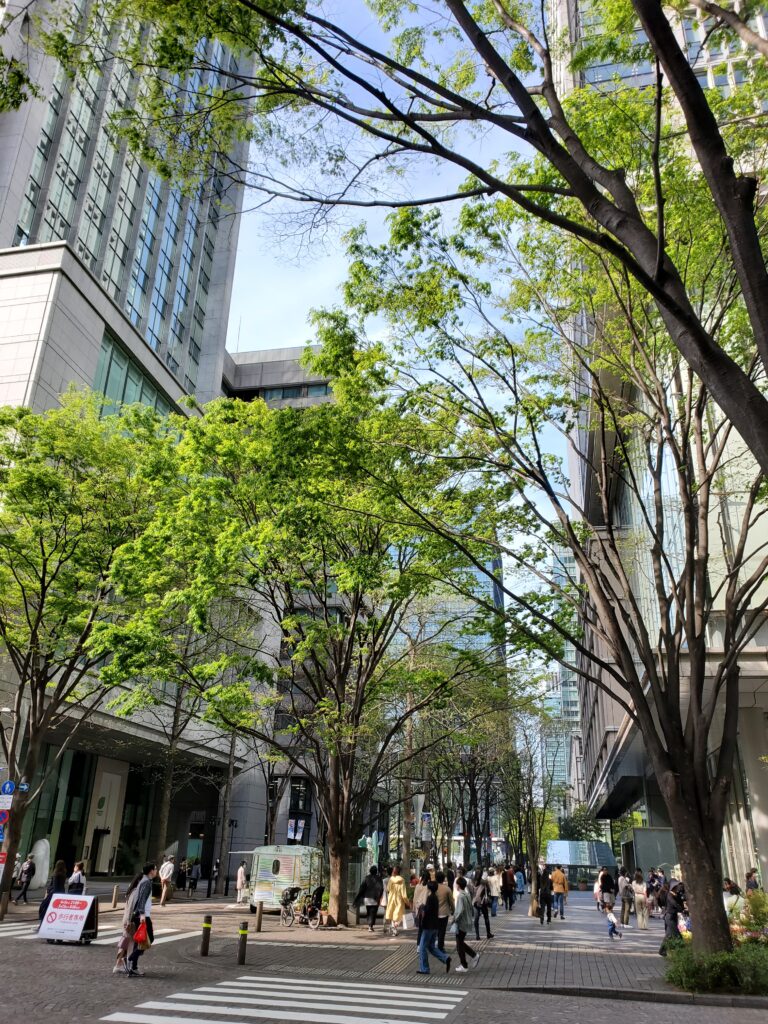
By evening, I found myself at an Italian restaurant tucked into a stone building along Marunouchi Naka-dori, a tree-lined street between office towers. The moment I opened the wooden door, I was greeted by candlelight and the scent of wood and olive oil. I ordered a spring vegetable and bamboo shoot risotto, infused with a hint of yuzu. The sharp crunch of the bamboo, the bitterness of mountain herbs, and the citrusy note of the yuzu mingled with the savory cheese—a dish that tasted unmistakably of Japanese spring, despite its Italian roots.
On my way back, the station came into view again, now glowing against the night sky. The red bricks were wrapped in warm light, and the skyscrapers overhead sparkled like stars. The reflections soaked into the pavement, into the water, into memory.
Ryuji’s words came back to me.
“Tokyo’s loud—but it still knows how to be quiet.”
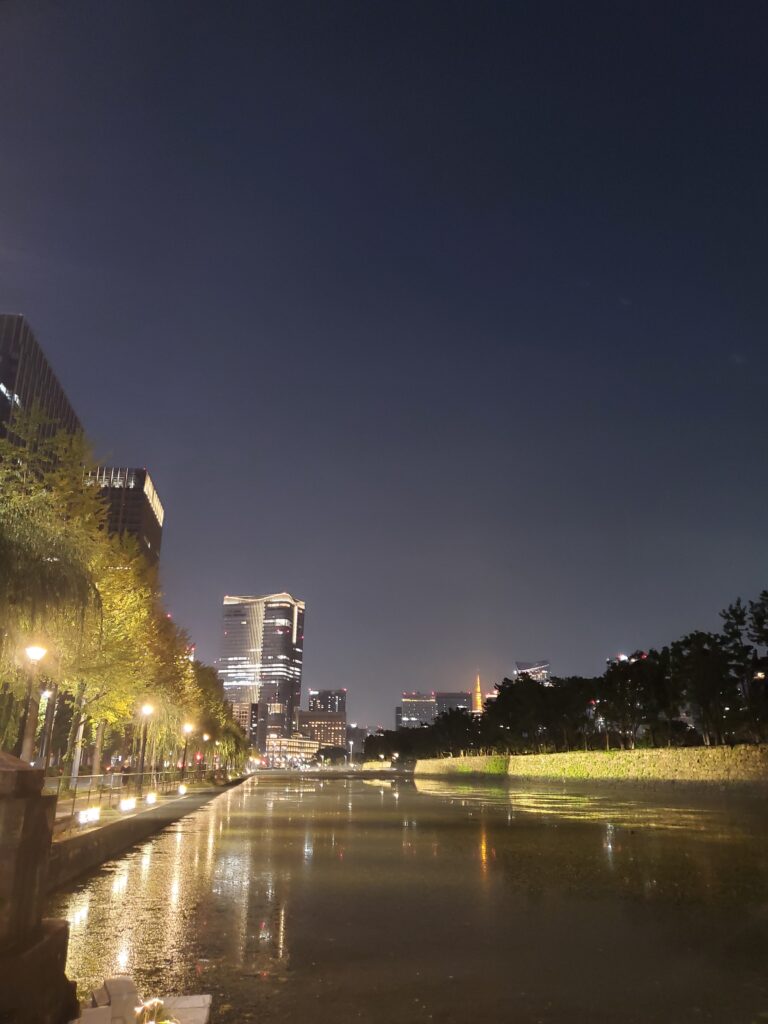
In that quiet, there was light. The glow of buildings, the shimmer of fountains, the fresh sun filtering through young leaves, the gentle illumination of the station façade. All of it helped restore something I’d lost in the rush of daily life—a sense of space, of pause, of presence.
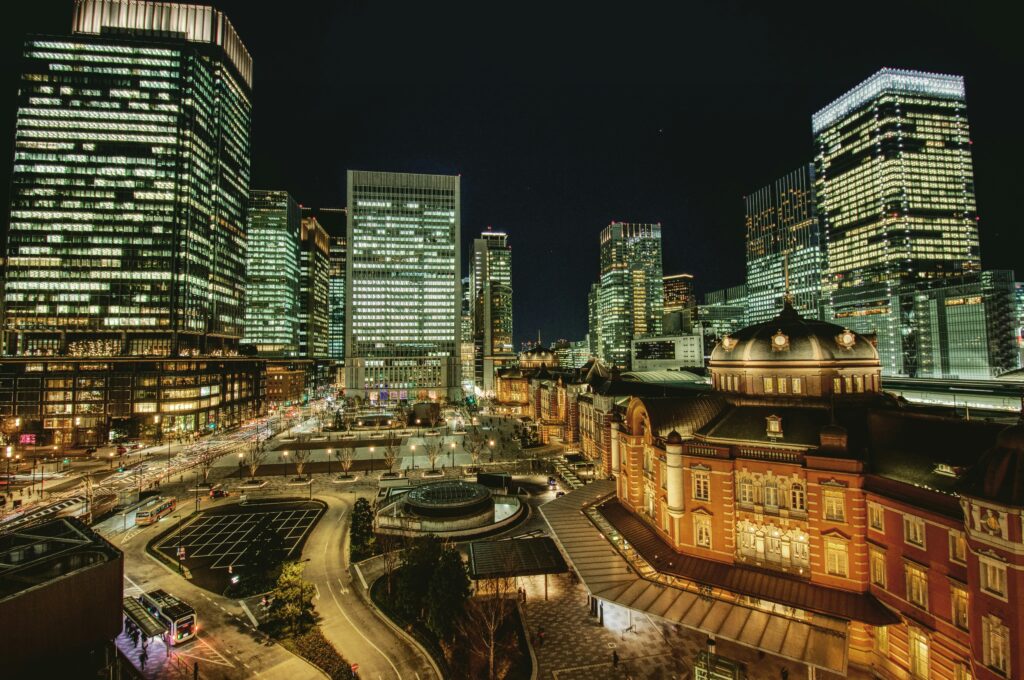
Marunouchi is not just the heart of Japanese business; it’s a place where a city’s silence and beauty come alive. It’s more than a sightseeing spot—it’s where the ordinary and the extraordinary meet, where stillness exists in motion.
This city makes room for quiet inside you.
And in that quiet, a gentle light remains.
Something New Travel

